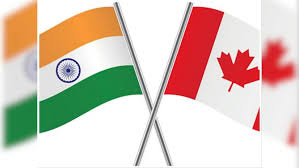For Indian professionals seeking opportunities abroad, the upcoming changes in visa classification systems in Australia and New Zealand present a timely and advantageous development. With the introduction of new occupation classification systems tailored to each country’s unique labor market needs, Indian workers can position themselves strategically to take advantage of evolving job landscapes in these regions. The Australian Bureau of Statistics and Statistics New Zealand recently announced that the existing joint Australian and New Zealand Standard Classification of Occupations (ANZSCO) will be replaced by two separate systems starting late 2024. This shift opens up new avenues for skilled workers, particularly from India, enhancing the prospects for employment in key sectors.
Understanding the New Classification Systems
The new classification system in New Zealand, known as the National Occupation List (NOL), is set to take effect on November 20, 2024. Meanwhile, Australia’s version, the Occupation Standard Classification for Australia (OSCA), will be implemented on December 6, 2024. The rationale behind these changes stems from the increasingly distinct labor markets in both countries, reflecting the growing diversity and specific needs of each nation’s workforce.
Australian Statistician Dr. David Gruen and New Zealand Government Statistician Mark Sowden emphasized that a tailored approach is necessary to adequately address the unique demands of their respective labor markets. This move aims to provide more clarity and accuracy in the classification of occupations, making it easier for foreign workers, particularly from India, to navigate the visa application processes.
Benefits for Indian Workers
1. Tailored Visa Processes
One of the most significant advantages of the new classification systems is the streamlining of visa application processes. With more precise and updated lists of occupations, Indian workers can expect clearer pathways for immigration. This simplification means that individuals with skills that match the newly defined classifications will find it easier to apply for and secure work visas.
2. Enhanced Recognition of Skills
The new systems are designed to prioritize sectors experiencing labor shortages. For Indian professionals, this means that if their skills align with high-demand areas—such as healthcare, information technology, engineering, and hospitality—they will likely see an increased likelihood of visa approval. For instance, with a global shortage of healthcare professionals, Indian doctors and nurses can find new opportunities in both Australia and New Zealand.
3. Maintenance of Trans-Tasman Recognition
Despite the introduction of separate classification systems, the mutual recognition of qualifications and skills between Australia and New Zealand will continue. This is particularly beneficial for Indian professionals, as it allows them to work across both countries without the need for re-qualifying or facing bureaucratic hurdles. For example, an Indian IT professional can easily transition from a job in New Zealand to one in Australia, capitalizing on the growing tech sector in both regions.
4. Awareness of Changing Skill Requirements
With the new classifications come revised skill levels and job codes for various occupations. Indian workers need to stay informed about these changes, particularly in sectors like healthcare where job reclassifications may occur. Understanding these shifts will ensure that applicants can align their qualifications with the latest criteria, enhancing their competitiveness in the job market.
5. Focus on Priority Occupations
Sectors expected to be prioritized in the new classification systems include healthcare, IT, engineering, and construction. Indian professionals working in these fields should actively monitor job openings and prepare to highlight their relevant skills and experiences. For example, the burgeoning field of renewable energy offers numerous opportunities for engineers and technicians, and Indian workers with expertise in sustainable practices can find rewarding careers in this sector.
6. Preparation of Documentation
To maximize their chances of securing a work visa, Indian applicants must ensure their documentation meets the updated classification standards. This includes verifying that their educational qualifications, work experience, and any required skill assessments are aligned with the new requirements. Being proactive in gathering and organizing these documents will facilitate a smoother application process.
7. Staying Informed About Policy Changes
Immigration policies are subject to change, and it is crucial for Indian workers to stay updated on the latest developments. Regularly checking official government sources or consulting with migration agents can provide insights into new opportunities and potential changes in visa requirements.
Strategies for Indian Professionals
To capitalize on these upcoming changes, Indian professionals can adopt several strategies:
- Skill Enhancement: Investing in additional qualifications or certifications in high-demand sectors can improve employability. Online courses, workshops, and training programs can help individuals stay competitive.
- Networking: Building a professional network in Australia and New Zealand can open doors to job opportunities. Engaging with industry professionals through platforms like LinkedIn or attending webinars can provide valuable insights and connections.
- Job Market Research: Staying informed about the labor market trends in both countries will help Indian workers identify where their skills are most needed. Regularly reviewing job boards and industry reports can guide their job search effectively.
- Cultural Familiarization: Understanding the cultural nuances of the workplace in Australia and New Zealand will aid in smoother integration. Participating in cultural exchange programs or online forums can help build awareness and prepare for a new work environment.
The introduction of separate occupation classification systems in Australia and New Zealand marks a pivotal moment for Indian workers aspiring to pursue career opportunities in these nations. By understanding the implications of these changes and aligning their skills with the evolving labor market needs, Indian professionals can enhance their chances of successful immigration and employment. With tailored visa processes, better recognition of skills, and maintained trans-Tasman qualifications, the path forward for Indian workers looks promising. As they prepare for this exciting new chapter, staying informed and proactive will be key to unlocking a world of opportunities in Australia and New Zealand.




